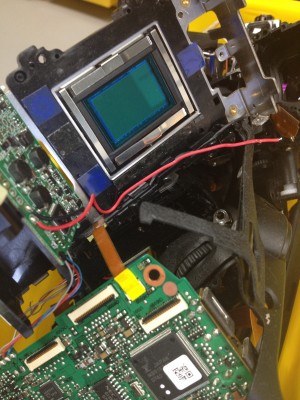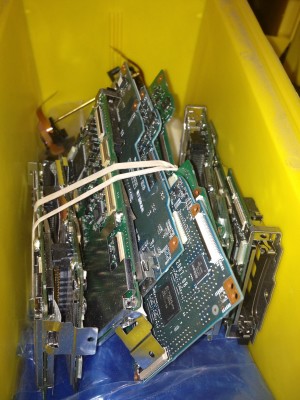
What happens to old, broken, or damaged photographic equipment? All too often it ends up in a land fill somewhere decaying over eons. It also might end up at the bottom of the ocean or in some other precious natural resource, creating unnecessary pollution. There is even a chance that it may be used for some depraved criminal act. This is not what this equipment was intended for by anyone. There is some hope though, it can be used for good or at least disposed of properly!
Many times a manufacturer will discontinue producing certain if not all parts for specific models in their line. The only way that these particular models can be repaired correctly is with properly preserved and stocked parts from the manufacturer. Just because a model has reached its production maturity date doesn’t mean that it has reached the end of its useful life, however. There are many reasons, both emotional and practical, why someone would want to preserve a camera that could be replaced with a new model for less than what the cost of repair would be. For those that have that need, using a recycled donor camera for parts is the only option. If you are one of those people, we understand, but keep in mind that the part you’re attempting to cannibalize may not last very long because it’s coming out of a used unit and the repair likely will have no warranty on it.
Cameras are constructed of many useful parts and materials.  The electronic components can be salvaged for use in other pieces of equipment, too. The lenses/elements, the motors, the gears, the covers, the wires, and even the screws that bind them together all have potential for further use. Within the repair industry, it is commonplace to regularly refurbish control units and rebuild damaged parts for use in repair applications, testing, and troubleshooting. This is done by stripping functional components from their plastic circuit boards and affixing them to other circuitry to make the non-functional parts functional again. These parts can’t be used permanently because they are not an original manufacturer part and would likely not survive normal use, but they are perfect for determining what is failing on a malfunctioning unit.
The electronic components can be salvaged for use in other pieces of equipment, too. The lenses/elements, the motors, the gears, the covers, the wires, and even the screws that bind them together all have potential for further use. Within the repair industry, it is commonplace to regularly refurbish control units and rebuild damaged parts for use in repair applications, testing, and troubleshooting. This is done by stripping functional components from their plastic circuit boards and affixing them to other circuitry to make the non-functional parts functional again. These parts can’t be used permanently because they are not an original manufacturer part and would likely not survive normal use, but they are perfect for determining what is failing on a malfunctioning unit.
What kind of items can be salvaged? Just about all photographic equipment has some use in the service industry. Equipment that is in good physical condition is ideal and is preferred. However, equipment that has become badly damaged from saltwater exposure or extreme impact may still have some useful parts. Rather than just throwing the unit in the nearest garbage can, dumpster, or tossing it back into the sea, send it/drop it off at the local repair facility. You can be assured that after it has been properly inspected and salvaged for useable materials, the remains will be disposed of in the proper manner. Another option is to attempt selling it on an internet auction or classifieds site. To someone who needs to fix a camera and was told it “can’t†be repaired, you would be a lifesaver; this can be a bit more work and don’t expect to get much out of it, monetarily anyhow.
On a final note, if you have been reading our blog for a while you may remember our article about batteries titled “Exploding Batteries.†In that article we discussed a bit about proper disposal of batteries and I just want to reiterate the importance of properly disposing your rechargeable battery. Rechargeable batteries are not only recyclable, but also very harmful to the environment if just thrown away. Let’s help keep all photographic equipment out of landfills. Give a hoot, don’t pollute.
